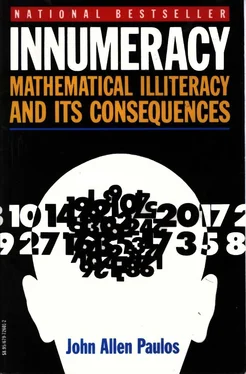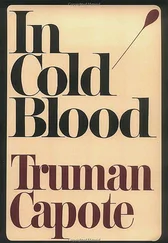Refinements can be made when the shooting percentage is other than 50 percent, and similar results seem to hold. A player who scores 65 percent of his shots, say, scores his points in the way a biased coin which lands heads 65 percent of the time "scores" its heads; i.e., each shot is independent of the last.
I've always suspected that notions like a "hot hand" or a "clutch hitter" or a "team that always comes back" were exaggerations used by sports-writers and sportscasters just to have something to talk about. There surely is something to these terms, but too often they're the result of minds intent on discovering meaning where there is only probability.
A very long hitting streak in baseball is a particularly amazing sort of record, so unlikely as to seem virtually unachievable and almost immune to probabilistic prediction. Several years ago Pete Rose set a National League record by hitting safely in forty-four consecutive games. If we assume for the sake of simplicity that he batted.300 (30 percent of the time he got a hit, 70 percent of the time he didn't) and that he came to bat four times per game, the chances of his not getting a hit in any given game were, assuming independence, (.7) 4=.24. (Remember, independence means he got hits in the same way a coin which lands heads 30 percent of the time gets heads.) So the probability he would get at least one hit in any given game was 1 -.24 =.76. Thus, the chances of his getting a hit in any given sequence of forty-four consecutive games were (.76) 44=.0000057, a tiny probability indeed.
The probability that he would hit in a consecutive string of exactly forty-four games at some time during the 162-game season is higher-.000041 (determined by adding up the ways in which he might hit safely in some string of exactly forty-four consecutive games, and ignoring the negligible probability of more than one streak). The probability that he'd hit safely in at least forty-four straight games is about four times higher still. If we multiply this latter figure by the number of players in the Major Leagues (adjusting the figure drastically downward for lower batting averages) and then multiply by the approximate number of years there has been baseball (adjusting for the various numbers of players in different years), we determine that it's actually not unlikely that some Major Leaguer should at some time have hit safely in at least forty-four consecutive games.
One last remark: I've examined Rose's streak of forty-four games rather than DiMaggio's seemingly more impressive streak of fifty-six games because, given the differences in their respective batting averages, Rose's streak was a slightly more unlikely accomplishment (even with Rose's longer season of 162 games).
Rare events such as batting streaks that are the result of chance are not individually predictable, yet the pattern of their occurrence is probabilistically describable. Consider a more prosaic kind of event. One thousand married couples who desire to have three children each are tracked for ten years, during which time 800 of them, assume, do manage to produce three children. The probability any given couple has three girls is 1/ 2x 1/ 2x 1/ 2= 1/ 8 , so approximately a hundred of these 800 couples will have three girls each. By symmetry, about a hundred of the couples will have three boys each. There are three different sequences in which a family might have two girls and a boy-GGB, GBG, or BGG, where the order of the letters indicates birth order- and each of the three sequences has the same probability of 1/ 8, or ( 1/ 2) 3. Thus, the probability of having two girls and a boy is 3/ 8and so approximately 300 of the 800 couples will have such a family. By symmetry, about 300 couples will also have two boys and a girl.
Nothing is very surprising about the above, but the same sort of probabilistic description (utilizing mathematics slightly more difficult than the above binomial distribution) is possible with very rare events. The number of accidents each year at a certain intersection, the number of rainstorms per year in a given desert, the number of cases of leukemia in a specified county, the annual number of deaths due to horse kicks among certain cavalry units of the Prussian Army have all been described quite accurately by the so-called Poisson probability distribution. It's necessary first to know roughly how rare the event is. But if you do know, you can use this information along with the Poisson formula to get a quite accurate idea of, for example, in what percentage of years there would be no deaths due to horse kicks, in what percentage of years there would be one such death, in what percentage of years two, in what percentage three, and so on. Likewise you could predict the percentage of years in which there would be no desert rainstorms, one such storm, two storms, three, and so on.
In this sense, even very rare events are quite predictable.
When asked why he doesn't believe in astrology, the logician Raymond Smullyan responds that he's a Gemini, and Geminis never believe in astrology.
Sample of supermarket tabloid headlines: Miracle Pickup Truck Can Heal the Sick. Giant Bigfoot Attacks Village. Seven-Year-Old Gives Birth to Twins in Toy Store. Scientists on Verge of Creating Plant People. Incredible Swami Has Stood on One Leg since 1969.
Inspect every piece of pseudoscience and you will find a security blanket, a thumb to suck, a skirt to hold. What have we to offer in exchange? Uncertainty! Insecurity!
– Isaac Asimov in the tenth-anniversary issue of The Skeptical Inquirer
To follow foolish precedents, and wink with both our eyes, is easier than to think.
– William Cowper
INNUMERACY, FREUD, AND PSEUDOSCIENCE
Innumeracy and pseudoscience are often associated, in part because of the ease with which mathematical certainty can be invoked to bludgeon the innumerate into a dumb acquiescence. Pure mathematics does indeed deal with certainties, but its applications are only as good as the underlying empirical assumptions, simplifications, and estimations that go into them.
Even such fundamental mathematical verities as "equals can be substituted for equals," or "1 and 1 are 2," can be misapplied: one cup of water plus one cup of popcorn are not equal to two cups of soggy popcorn, and "Infant Physician Duvalier" just doesn't have the same impact as "Baby Doc." Similarly, President Reagan may believe that Copenhagen is in Norway, but even though Copenhagen equals the capital of Denmark, it can't be concluded that Reagan believes the capital of Denmark is in Norway. In so-called intentional contexts like the above, the substitution doesn't always work.
If these basic principles can be misinterpreted, it shouldn't be surprising that more esoteric mathematics can be, too. If one's model or one's data are no good, the conclusions that follow won't be either. Applying old mathematics, in fact, is often more difficult than discovering new mathematics. Any bit of nonsense can be computerized-astrology, bio-rhythms, the I Ching -but that doesn't make the nonsense any more valid. Linear statistical projections, to cite a frequently abused model, are often invoked so thoughtlessly that it wouldn't be surprising to see someday that the projected waiting period for an abortion is one year.
This sort of careless reasoning is hardly limited to the uneducated. One of Freud's closest friends, a surgeon named Wilhelm Fliess, invented bio-rhythmic analysis, a practice based on the notion that various aspects of one's life follow rigid periodic cycles which begin at birth. Fliess pointed out to Freud that 23 and 28, the periods for some metaphysical male and female principles respectively, had the special property that if you add and subtract appropriate multiples of them, you can attain any number. Stated a little differently: any number at all can be expressed as 23X + 28Y for suitable choices of X and Y. For example, 6 = (23 x 10) + (28 x -8). Freud was so impressed with this that for years he was an ardent believer in biorhythms and thought that he would die at the age of fifty-one, the sum of 28 and 23. As it turns out, not only 23 and 28 but any two numbers that are relatively prime-that is, have no factors in common-have the property that any number can be expressed in terms of them. So even Freud suffered from innumeracy.
Читать дальше












